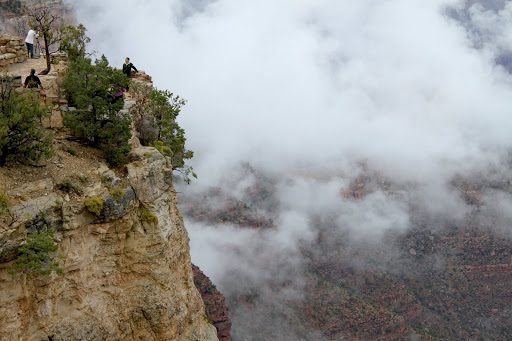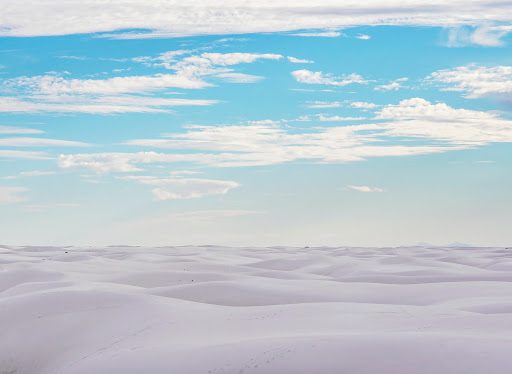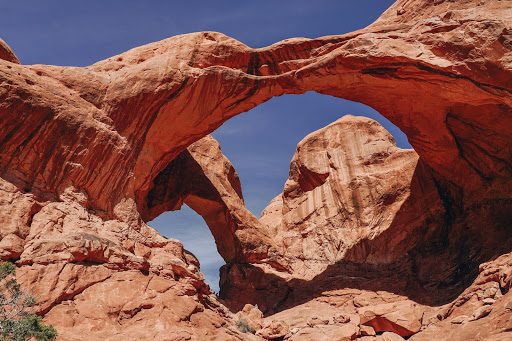Every adventurer has a special place. Every adventurer holds close a preferred vista, ecosystem or terrain in which they feel most at peace or alive or inspired.
Some look to towering peaks to find inspiration and feel smallness in a big, increasingly distracting society. Some prefer the solitude of a wide-open plain, the horizon rising ever so slightly many miles ahead, to feel the expansive and encompassing bowl of sky above their heads. Some lace up their boots and fill up their water bottles and strike out of the desert, enjoying the kinship with the harshest and sparsest that nature has to offer. Some just walk a nice walk among towering trees and beautiful flowers, maybe their child or canine companion trailing alongside enjoying the beauty of nature while breathing in the clean air.
For the uninitiated adventurer, here’s the good news: one particular region of the continental United States provides access to all of these natural oases and more. The best news? These diverse landscapes are located just a few short hours drive from one another in an area of the U.S. known as Four Corners: where Colorado, New Mexico, Arizona and Utah meet.
Since its creation in 1916 under President Woodrow Wilson, the National Parks Service (NPS) has been an invaluable protector and promoter of natural wonders from the Poconos to the Golden Gate Bridge and these Four Corners States contain some of the NPS’ most prized wonders.
Below is a guide to what the National Park Service has to offer thrill-seekers and pleasure cruisers alike who plan to include a trip to the American Southwest on their next adventure.
COLORADO

Few states boast the diversity of landscape that Colorado has to offer. The wide, flat plains of eastern Colorado belie the heaven-high 14,000 ft escarpments that climb ever higher the farther one travels west into the state. The real question is how to fit in everything this majestic state has to offer.
Here’s one way, according to Colorado National Parks Trips:
“Your journey starts in Denver, the gateway to the Rocky Mountains.
Next stops are Lyons, Estes Park, and then Rocky Mountain National Park where wildlife and incredible hikes await, from Glacier Lake to Long’s Peak.
From there one can head west to the beautiful town of Grand Lake, which sits at the park’s West Entrance, before heading to Hot Sulphur Springs to soak in the titular hot springs and on to Winter Park for fun activities at the Winter Park Resort base area.
Continue west to the awe-inspiring red-rock landscapes of Colorado National Monument in Grand Junction.”
From there, travel south to the majestic Black Canyon of the Gunnison National Park. Farther south, you’ll discover ancient history in Mesa Verde National Park and authentic towns like Durango, Pagosa Springs, South Fork and Alamosa along the way to Great Sand Dunes National Park and Preserve. When you return to the Denver area, you’ll find affordable lodging, lively restaurants, the Wild Animal Sanctuary and a unique High Plains experience.
ARIZONA

Just to the southwest lies Arizona and its diversity of ecosystems is virtually unmatched in the lower 48. Arizona is a large state, with a plethora of sights to visit.
One can watch the most majestic sunrises at Horseshoe Bend, take in the painted vistas and fun, kid-friendly hikes of Sedona (also a must-see destination for the spiritually in tune according to the locals), walk among the innumerable cacti in Saguaro or experience the otherworldly ambiance and scenery of the Petrified Forest, where the visitor will feel as if they are transported to another time and place entirely.
And, of course, one must make time for the most famous landmark and from where Arizona gets its nickname The Grand Canyon State, the Grand Canyon. Whether your preference is to hike down along the Colorado River, rent a helicopter to weave through the various switchbacks of the canyon walls or simply to park and gaze across its terrifyingly beautiful grandeur, this stop should be at the top of the list when visiting northern Arizona.
NEW MEXICO

The Land of Enchantment may offer the greatest opportunity to see the melting pot of terrains that make up the Southwest, in the shortest amount of time. Drive 100 miles in nearly any direction and find yourself in a vastly different environment. Here are a few you must include in your next adventure:
The first stop is Chaco Culture National Historical Park, located in northwestern New Mexico about two and a half hours from Albuquerque. It was home to a thriving culture of Chacoan People from 850-1250 A.D. The park is host to a large concentration of pueblos, an array of pre-Columbian artifacts and thousands of petroglyphs.
Another must-see is the Bandelier National Monument which history buffs, nature lovers and adventure seekers alike will enjoy its diverse surroundings, rich history and over 70 miles of hiking trails.
Bandelier National Monument is a 33,000-acre monument preserving the homes of New Mexico’s Ancestral Puebloans. About 2 hours from Albuquerque, the 50-mile area encompasses the Pajarito Plateau into the mountainous region of Jemez Volcanic Field.
The snow-like sand dunes of White Sands National Park roll throughout 275 miles of the Tularosa Basin creating a landscape like you’ve never seen before. It’s ideal for adventure enthusiasts with mountain bike trails, dune buggy excursions and even “sledding” down the sugary slopes.
The final must-see in New Mexico is Carlsbad Caverns, which is located in southeastern New Mexico in the Guadalupe Mountains in the Chihuahuan Desert. Below the desert surface lies a world of a totally different kind. Over 4 million years ago sulfuric acid dissolved the limestone earth leaving behind over 119 unique caves. Carlsbad, the 4,000-foot limestone main cave serves as the third-largest in America and the seventh-largest in the world. Explore the park’s many rocky crevasses, hiking trails, cacti and wildlife.
UTAH

Sprawling geographically from St. George to the north of the Great Salt Lake, Utah has no shortage of natural wonders for the nature lover to behold.
Home to the mighty Five of Arches, Bryce Canyon, Canyonlands, Capitol Reef, and Zion National Parks, a Utah road trip is an incredible journey. From soaring arches to magnificent rock formations that beggar belief to the unseen eye to the iconic hikes through stunning landscapes, there is so much to see and do.
Most recommend starting from Las Vegas, Nevada, and traveling North and East toward Salt Lake City. This path up Interstate 15 is the nature lovers superhighway through the state, offering the chance to stop and enjoy the highlights of Utah’s National Parks.





